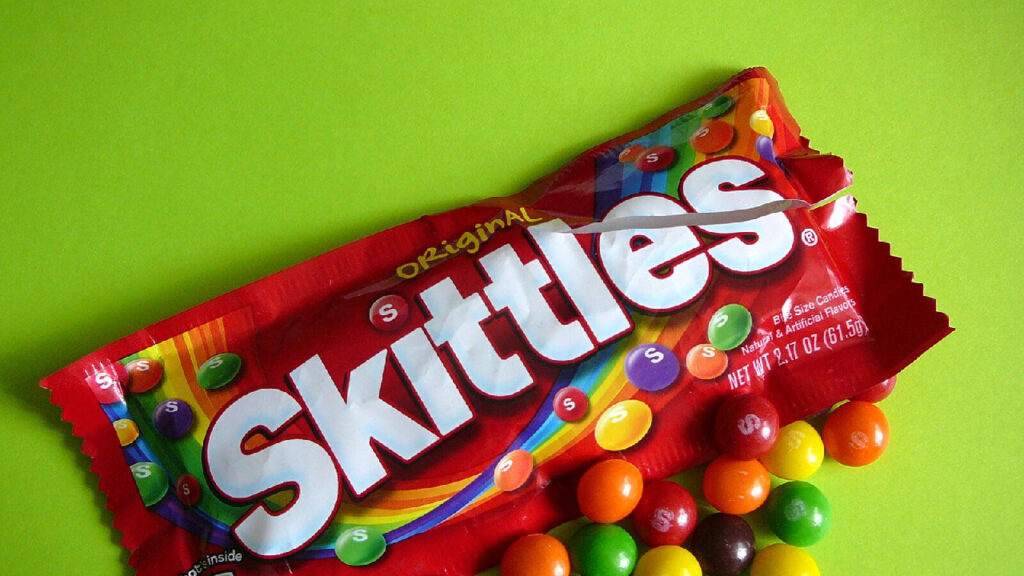U.S. News
California’s Controversial ‘Skittles Ban’ Battles Candy Makers
California lawmakers, in collaboration with Candy Makers, are aiming to experience a slightly more natural candy assortment. The state Assembly has approved a bill that prohibits the use of five chemical additives in food products, including a coloring agent discovered in Skittles—famed for its “taste the rainbow” slogan—and Red 3, employed in packaged cookies, frostings, and other snacks.
Advocates for consumer protection, supporting the bill, argue that these additives pose health hazards and should be eliminated. Candy makers, however, contend that the safety of food additives should be determined by federal regulators, not individual states.
Critics have labeled the bill the “Skittles ban,” igniting a nationwide debate regarding these additives and how their potential removal might impact cherished treats if the bill becomes law. Both sides are preparing for a battle in the California state Senate, where lawmakers will deliberate on the bill next. Supporters dismiss the term “Skittles ban,” stating that candy makers have numerous alternative coloring options. They emphasize that the European Union has already predominantly banned the five additives targeted by the California bill.
Assemblyman Jesse Gabriel, a Democrat who co-authored the bill alongside Assemblywoman Buffy Wicks, stated, “If I thought this would ban Skittles, I would vote against it. I don’t believe this is going to pull a single product off the shelf.”
Get News WSJ | Wall Street Journal 2-Year Subscription for $480
Candy makers assert their aversion to a state-by-state approach in regulating their ingredients. Christopher Gindlesperger, Senior Vice President of Public Affairs for the National Confectioners Association, which represents candy makers, voiced concerns about the bill, stating, “The California Assembly is well-intentioned, but this is not the right way to do it.”
Opponents argue that the U.S. should implement any necessary modifications. Food and Drug Administration (FDA). Recently, the FDA received consumer petitions urging the discontinuation of Red 3 and titanium dioxide, a coloring additive found in Skittles.
Assemblyman Vince Fong, a Republican who voted against the bill, stated, “We shouldn’t put the cart before the horse.” An FDA spokesperson confirmed that the agency has assessed all five additives and is actively reviewing a petition filed by the Center for Science in the Public Interest and others to revoke the approval of Red 3 for use in food.
Consumer advocates contend that the FDA has not reevaluated some of these additives since the 1970s and has failed to follow through on its 1992 comments suggesting the revocation of Red 3’s use in food. Both sides are preparing for a battle in the California state Senate, where lawmakers will deliberate on the bill next.
While the FDA permanently approved the use of Red 3 in food decades ago, it revoked the temporary approval for its use in cosmetics in 1990 after determining that it “causes a carcinogenic response in rats.” In 1992, the FDA expressed its belief in the federal register that it “must take action to revoke the permanently listed uses of the color additive.”
Get WSJ Print Edition Get The Wall Street Journal Newspaper for $318
The International Association of Color Manufacturers stated that scientific understanding has progressed since then, suggesting that the effects observed in rats fed high doses of color additives may not be applicable to humans, particularly in this context. In addition to Red 3, the bill passed by the California Assembly, with a vote of 54-12, aims to prohibit the use of titanium dioxide, potassium bromate, brominated vegetable oil, and propyl paraben in food products.
Mars, the company behind Skittles, announced plans in 2016 to eliminate artificial colors from all its human food products but halted the initiative in 2021, citing the lack of consumer concern. Mars confirmed its commitment to removing artificial
colors in Europe. Skittles in the U.S. currently contain titanium dioxide, which enhances color and extends shelf life.
Given the significant market size of California, candy makers would likely implement any required ingredient changes across the board, as stated by consumer groups. However, reformulating products would require time and resources, posing a particular challenge for smaller companies.
Frederick Stearns, a partner at the law firm Keller and Heckman who specializes in FDA matters, foresees that the availability of comparable substitutes for these additives will influence companies’ decisions. He noted, “We generally don’t see companies marketing separate versions of products for California and then for the rest of the country.” Companies often hesitate to alter recipes for popular, well-established foods.
For instance, General Mills reintroduced Trix cereal made with artificial colors after receiving complaints about an all-natural version. Finally, Some companies have already phased out many of these ingredients. sIn 2014, Panera Bread committed to removing artificial preservatives, sweeteners, flavors, and colors. Panera successfully eliminated all five additives targeted by the California bill by the end of 2016, according to a company spokesperson.

